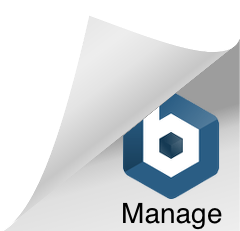
At a young age, you learn how to speak. Words become the basis for how you relay your needs, feelings, and ideas. You become proficient at putting together coherent sentences; stringing these sentences together helps you articulate complete thoughts and opinions. Eventually, you engage in conversations, debates, and discussions. In short, you master the art of communication through the spoken word.
However, a chasm exists between the ability to communicate and the aptitude to be an effective communicator. That gap is explained by one simple concept: articulating yourself is not the same as being heard and understood.
Effective communication is the ability to deliver a message in such a way that the listener has a clear comprehension of the exact meaning you intend to convey.
While this concept may seem simple at face value, the effort, time, and practice required to develop that skill set is frequently overlooked. Too often, communications are misheard or go unheard altogether. Sometimes, the target of the message has stopped listening. Other times, imprecise language creates holes in the listener’s understanding, and contradictory messages leave the listener confused.
To illuminate the path towards effective communication, we’ll look first at communication tactics and then move into the process of approaching and engaging your target listener. The goal is to arm you with knowledge so you can get out there and practice. No one becomes an effective communicator overnight, but the only way to improve is to learn what to do (and what not to do) and to find your own rhythm for starting conversations.
Of note: while the tactics below can be utilized for many different types of conversations, the context here is how to effectively communicate in person with potential customers—people whom you don’t currently have a dialogue but want to start a conversation with for the purposes of delivering your business message.
COMMUNICATION TACTICS
Mind the 7 C’s
Let’s start with the basics. When striking up a conversation with someone you don’t know, there are a cluster of “C” words—coined the 7 C’s—that serve as guidance, both for how to present yourself and for how to speak in order to ingratiate yourself to your audience or listener.
- Clear—Coherent, simple, and straightforward communication is essential.
- Consistent—Unchanging and stable messages illustrate reliability.
- Credible—Speaking the unequivocal truth helps you gain and keep trust.
- Confident—Self-assured composure boosts people’s impression of you.
- Civil—Being courteous goes a long way.
- Concise—Pick words to illustrate your point and drop anything superfluous.
- Compassionate—Empathy and compassion endear you to others.
Four of those traits—credible, confident, civil, and compassionate—speak to the person delivering the message. After all, who doesn’t want to communicate with an authentic, humble person who focuses on the feelings of others while illustrating confidence and speaking the truth?
The other three qualities—clear, consistent, and concise—describe how to make your message understandable and digestible. Simplicity is always appreciated for clarity and encourages engagement—the whole goal of the communication.
Beware of your (unintentional) language
What language do you speak without saying a word?
Body language is one of the most overlooked—and primal—ways that we communicate with each other.
You often sense or inherently notice when someone looks open and friendly, closed and uptight, or tense and jittery. Sometimes the signs are more obvious than other times, but we often struggle to recognize the same body language in ourselves. Unfortunately, some of the very things you might be feeling (discomfort, nervousness) are probably written all over your face and in your stance.
The data backs up the assertion that verbal messages are interpreted by people based on three things:
- 55% is based on facial expressions and body language
- 37% on tone of voice
- 8% on words
Read that again: only 8% of the verbal messages people hear are the actual words we use.
When broken out by gender, women give even more weight to facial expressions and body language and even less to words.
Utilize positive body language
Not surprisingly, employing physical methods to portray yourself as confident in what you have to say will go a long way towards helping you to communicate effectively.
These five techniques yield delightful results:
- Eye contact creates an instant connection between people. It’s much easier to garner attention, keep them listening, and convince them of your message if you’re holding their gaze.
- Uncross your arms. Human instinct tells us to protect or comfort ourselves when insecurity strikes, which is actualized in arms being crossed over one’s chest. That exact behavior perpetuates the problem because it’s off-putting to the person you’re trying to engage.
- Smile and the world will smile with you. That oft-used phrase is never more true than when approaching someone new. Smiling is infectious in all the right ways: it triggers a positive response from the person you’re hoping to engage, and as a bonus, it naturally helps you feel better, too.
- Pay attention to feet. Point yours at the person you’re speaking with and make sure the other person is doing the same to you. If his or her lower body starts to point away from you, an escape from the conversation is about to occur. You have mere moments in which to save the interaction.
Mirror (healthy) body language of the person you’re speaking with as a way to indicate that you are similar to each other and understand what that person is thinking of feeling. Be subtle and sincere in your movements.
On a final note: in our mobile society, the biggest body language no-no is looking down at your hands—not because you’re fidgeting with them (although that’s also not ideal), but because you’re looking at your phone. Unless it’s a dire emergency, never pull out your phone to check email or text messages in the midst of communicating with someone new. The only reason to take out that device is to input the contact information of the person standing in front of you.
Use only the good words
Since words are being heard at a much lower rate than we’d hope (8% or less), you’d be well served to pick the good ones.
Use positive key words that make your point and use them often. Repetition is great for planting the seed. That word or phrase will subconsciously become associated with you or with what you’re trying to sell (ideally, both).
On the other hand, whether you’re, like, valley girl material or not the, um, you know, ah, most articulate person in the world, you’re much better off adding pauses or brief moments of silence to your repertoire than resorting to filler words.
While discussing words to remove, this sentence illustrates two overused words that cripple the speaker every time: “I just want literally five minutes of your time.”
The word “just” make you sound weak and as if you believe you’re imposing on the person. That’s not the confident first impression you want to make. And please don’t get me started on the word “literally,” which has been bastardized beyond recognition. Removing these words and others like them will elevate your speech and writing.
In the same vein, negative words like “never,” “can’t” and “no” should be avoided, especially in early conversations. Few people appreciate hearing pessimism from anyone, let alone someone they just met.
APPROACHING AND ENGAGING YOUR TARGET LISTENER
Know your audience
Now that you have tools for how to speak—both verbally and through positive body language—we can look at the best methods for establishing communication.
The most important thing you can do when approaching someone is to know who the person is. That doesn’t mean you need the person’s life story or to know favorite colors and hobbies (although some small details never hurt); the point is to understand why your message is important to that specific potential customer.
What does that mean you need to do? Think back to your days in school.
Yep, you need to do your homework.
- What are the daily challenges he or she faces?
- How can you help this person with something that is an urgent pain point?
- How do you solve the problems that keep him or her up at night?
- Why should he or she want to talk to you?
- What messages resonate best?
Part of understanding your audience is putting yourself in their shoes in order to empathize with the person and respond in a way that matches what they are communicating back to you. You are a source of information, but you should also be someone who can listen and adjust your message based on what you’re hearing.
Direct approach: Share your objective
Walking up to someone you don’t know to do a sales pitch can be daunting for even the most self-assured and practiced people. There’s a good explanation for this trepidation, as it turns out that most people don’t like to share their precious time with strangers without knowing why upfront.
In a business setting, both men and women want to understand three things before entering into a conversation:
- How painful the topic or conversation is going to be
- How long it will take
- What will be asked of them at the end of the conversation
The reason behind these three preemptive conversational needs is simple: there’s a strong desire to have an exit plan.
That’s right. As you’re trying to engage this person, he or she is strategizing about how to get away from you. That’s what’s proverbially known as “starting behind the eight ball.”
The best way to avoid this scenario is to begin the conversation by setting the stage. Make it clear exactly who you are, how much time you’ll need, and how you can help the person.
Essentially, you’re giving the recipient a clear understanding of the context and a taste of the content. After all, you know exactly why you want to engage with this person, so put their mind at ease and give them the same knowledge upfront. They’ll relax and focus on what you have to say, which is a win-win for both of you.
Understanding what the person’s most pressing concerns are and what matters to them is the goal of your conversation. Once you’ve laid the groundwork, ask open-ended questions to validate what you think about their need for your solution.
Indirect approach: Take the plunge
If your style is to approach, engage, and then maneuver your way into the business solution you want to pitch, here are some ideas on how to get started.
First, it’s always helpful to arm yourself with some conversation-starting questions that get dialogue flowing. As Jane Fonda famously opinioned, “It’s more important to be interested than to be interesting.”
At a most basic level, here’s the “one secret” you need to know: say something the person will be happy to hear.
Sounds easy enough, but how do you know what that “something” might be?
For icebreakers that aren’t simply introducing yourself by name and hoping for the best, a variety of conversation-starters can be used:
- Talk positively about something relevant to the social or work situation you’re currently in. Perhaps there was a speaker? Or a panel discussion or roundtable? You have common ground based on your environment and the fact you’re in the same physical space; use it.
- Keep current event topics top of mind. Bring them out as needed and ask for the person’s thoughts or opinions in order to start a dialogue.
- Give the person a compliment. Everyone likes to hear something nice, as long as it’s not too personal.
- Worst-case scenario, talk about something benign like the weather or the food. However, don’t stay in this small talk zone for too long. Use the time to figure out a better way to engage and converse.
You’ve done the hard part. You’ve walked up and started the conversation. Now take the next step and ask open-ended questions about what this person thinks about every day, what they do for fun, what interests they have, what languages they know, where they’ve lived… anything to get the person to open up and share.
Because, as you might guess, there’s a common human affliction you can use to your advantage: most people like to talk about themselves. Capitalize on it.
When you’re ready, broach the work subject and ask open-ended questions to ascertain what this person thinks about their job and their challenges on a daily basis. You’ll have created a natural opening for yourself to discuss what you do and how you might be able to help.
Listen, listen, and listen some more
Regardless of your direct or indirect approach, you need to make sure you do this one critical thing: you must listen.
The most integral characteristic of an effective communicator is the capacity to be a good listener. Nay, an excellent listener. An ancient quote by the Greek philosopher Epictitus illustrates the point perfectly:
“We have two ears and one mouth so that we can listen twice as much as we speak.”
What does that entail?
- Look the person in the eye.
- Don’t interrupt.
- Pay attention.
It’s always tempting to jump in with your ideas or to formulate your thoughts and responses before the person is finished speaking, but you may miss the real point of what they’re saying. Give yourself a moment to pause when the person is done talking, collect your thoughts, and then respond. The person will feel like you heard them and will be more open to whatever you’re about to say.
Trust me. I bring value.
What’s the real purpose of listening? Getting to know the person you’re talking to and making it obvious that you’re learning from what’s being said. Illustrating that the conversation and this person both matter to you. Building trust.
One TEDx speaker has gone so far as to call himself a “story whisperer” because he’s honed the art of listening, asking the right questions, and gaining people’s trust. People not only share their stories with him, but they know he understands them, and they trust him even more. The theory is that, by really listening, you create a space for deeper conversations and better solutions through connection.
Once you’ve started a dialogue, asked questions, listened, and built trust, you’re ready. You should know a lot about your potential customer and what their pain points or challenges are. Not only that, but you know how to speak to them in a way that will resonate. Your business value may have been a perfect match to begin with, but you now have developed the interpersonal communication to make sure that value is perfectly understood.
Learning how to be an effective communicator is a journey, not a destination. Even successful sales people, CEOs, leaders, and speakers spend hours honing their talents to make sure their exact and precise message is the one that the listener hears and remembers. The key is to learn the basics and then continue to practice the skills needed to achieve effective communication. Enjoy the journey.
At Insightly, we offer a CRM used by small and mid-sized businesses from a huge variety of verticals. Learn about Insightly’s features and plans on our pricing page or sign up for a free trial.

 Annette DeNoyer is a strategic content marketing consultant with over eight years experience in a variety of technology roles, most notably in product management, product marketing, and content marketing. Her experiences at both tech startups and established organizations enable her to create effective messaging for young companies looking to attract attention and garner credibility, as well as for established companies developing strategic content for each sales stage in the Buyers Journey.
Annette DeNoyer is a strategic content marketing consultant with over eight years experience in a variety of technology roles, most notably in product management, product marketing, and content marketing. Her experiences at both tech startups and established organizations enable her to create effective messaging for young companies looking to attract attention and garner credibility, as well as for established companies developing strategic content for each sales stage in the Buyers Journey.






































